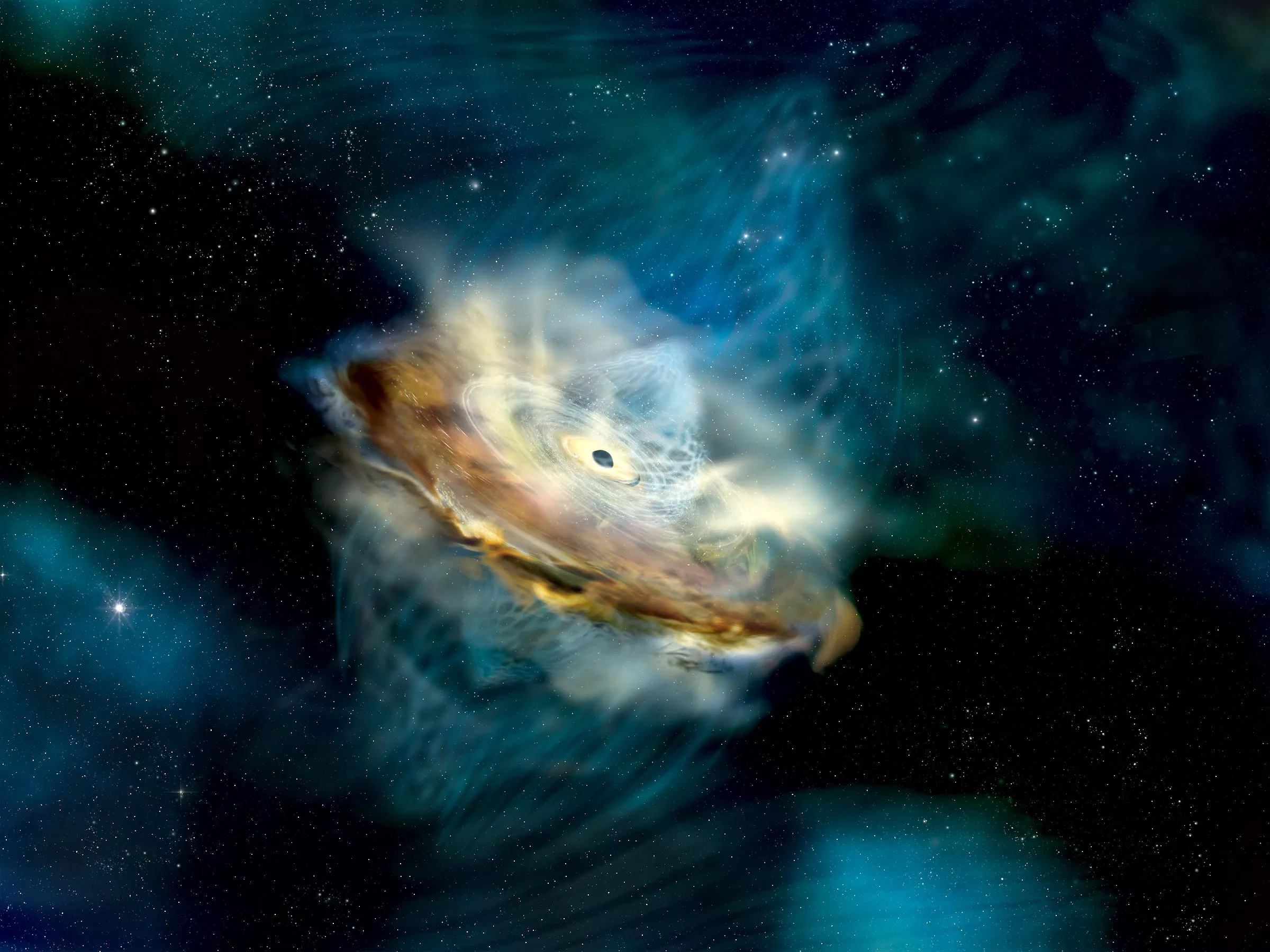Some strange things happened in the galaxy called 1es 1927+654: at the end of 2017, the supermassive black hole at the center of the galaxy experienced a large-scale identity crisis for reasons that scientists could not explain. In a few months, this already bright object -- which is classified into a class of black holes called active galactic nuclei (AGN) because of its brightness -- suddenly became brighter -- its brightness in visible light was nearly 100 times that of normal conditions.

Now, an international team of astrophysicists, including scientists from the University of Colorado at Boulder, may have determined the reason for this shift. The magnetic field lines passing through the black hole seem to have reversed, which makes the properties of the object change rapidly but briefly. It's like the compass on earth suddenly starts pointing south instead of North.
Nicolas scepi, co-author of the research report, said that it may change scientists' view of supermassive black holes. It is reported that the research report was published in the Astrophysical Journal on May 5.
"Normally, we expect black holes to evolve over millions of years. But these objects -- what we call changing AGNs -- evolve over a very short time scale. Their magnetic fields may be the key to understanding this rapid evolution," scepi said
Scepi, together with Mitchell Begelman and Jason Dexter, first put forward the possible theory of magnetic reversal in 2021.
New research supports this view. Among them, the team led by sibasish laha of NASA Goddard Space Flight Center collected the most comprehensive data about the distant object. Using observations from seven telescope arrays on the ground and in space, the team tracked the radiation flow from 1es 1927+654 because the AGN was very bright and then dimmed.
These observations suggest that the magnetic field of a supermassive black hole may be much more dynamic than scientists once thought. In addition, Professor Begelman of the Department of Astrophysics and Planetary Science pointed out that the AGN may not be alone. "If we see this in a case, we will certainly see it again. Now we know what to look for," he said
Begelman said that AGN was generated by some of the most extreme physics in the known universe. These monsters appear when supermassive black holes begin to suck in large amounts of gas from their surrounding galaxies. Just as water rotates around the outfall, the closer these substances are to the black hole, the faster they will rotate -- and form a bright "accretion disk", which will produce strong and diverse radiation. It is reported that scientists can see it billions of light-years away.
These accretion disks also produce a strange feature. They generate a strong magnetic field around the central black hole. In addition, they also point in an obvious direction, such as North or south, like the earth's own magnetic field.
"There is growing evidence from the event horizon telescope and other observations that magnetic fields may play a key role in influencing how gas falls on black holes," said Dexter, an APS assistant professor
This may also affect the brightness of AGN, just like the core of 1es 1927+654, how bright it looks through the telescope.
In may2018, the energy surge of this celestial body has reached its peak and ejected more visible light, but also many times more ultraviolet radiation than usual. At about the same time, the X-ray emission of AGN began to darken.
"Normally, if the UV rises, your X-rays will also rise," scepi said. "But here, the UV rises and the X-rays drop a lot. It's very unusual."
According to Begelman, these features constantly pull gases from outer space, and some of them also carry magnetic fields. If the magnetic field pulled in by the AGN is in the opposite direction of its own -- that is, they point south rather than North -- then its own magnetic field will weaken. This is a bit like a tug of war team pulling a rope in one direction, which can make their opponents' efforts in the other direction ineffective.
Jila's team speculated that in this AGN, the black hole's magnetic field became so weak that it flipped over.
"You basically wiped out the magnetic field," Begelman said
In this new study, researchers led by NASA set out to collect as much observational data as possible on 1es 1927+654.
The disconnect between ultraviolet and X-ray radiation proved fatal. Astrophysicists suspect that the weakening of the magnetic field will lead to such a change in the physics of AGN - shifting the accretion disk of the black hole, so that it ejects more ultraviolet and visible light. Paradoxically, the X-ray radiation is reduced. No other theory can explain what the researchers saw.
By the summer of 2021, AGN itself had calmed down and returned to normal. But scepi and Begelman think this event is a natural experiment -- to probe near black holes to learn more about how these objects contribute to bright radiation beams. In turn, this information may help scientists know exactly what signals they should look for in order to find more strange AGNs in the night sky.
"Maybe some similar events have been observed -- we just don't know about them yet," scepi said